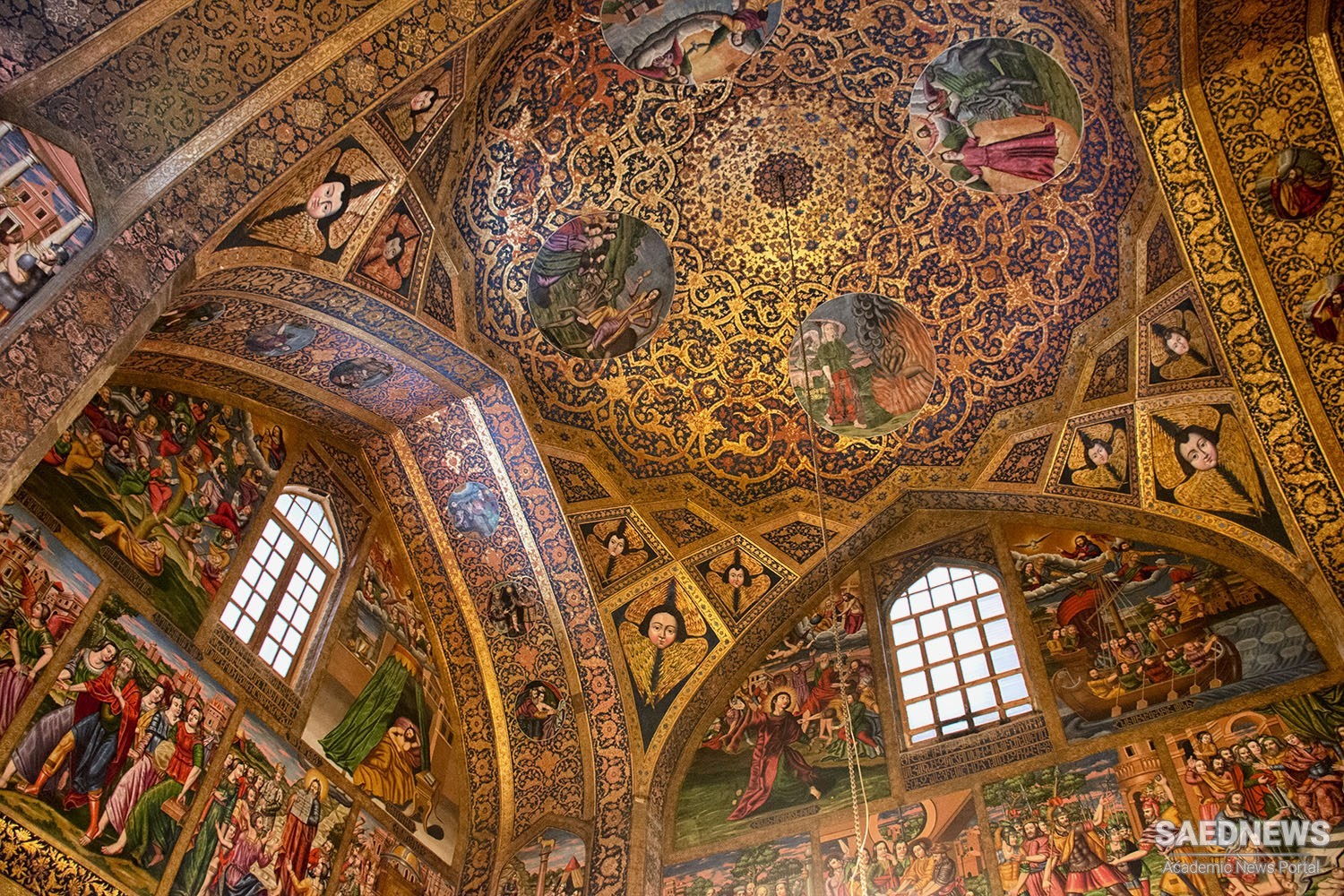He regarded them as a valuable property. Indeed, the Armenians of Julfa had a long history in trade. They had built a dynamic network, purchasing their silk from Gilan, Shirvan and Qarabagh and then selling it in the trading houses they had established in market towns of the Ottoman Empire and trading posts on the Mediterranean and Indian coasts. Baghdiantz alleges that their commercial organisation equalled that of the European East India companies. Such trading associations did not exist in Iran. This enabled the Julfans to amass a fortune unmatched elsewhere in the area. They were the richest merchants of Western Asia, and because of their financial status, they had been able to obtain privileges from Safavid monarchs even before the reign of Shah Abbas I.
After deporting the Julfan Armenians to Isfahan, Shah Abbas waited until 1619 before confirming their ownership of the lands in the neighbourhood of the New Julfa. This was a condition for the Armenians’ agreeing to the Shah’s price for the purchase of silk. Shah Abbas had decided to control the supply of silk, since he knew that all silk producing areas were under his jurisdiction. His prices were not appealing to foreign merchants, and so the Armenians became the sole purchasers. Shah Abbas relied on the Julfans’ commercial contacts in the Ottoman and European markets, where they sold the Shah’s silk and brought back silver. The Shah taxed both their export of silk and their import of silver. Thus, the Armenians, as the main supplier of the country’s silver, had become the backbone of Iranian foreign trade.
Owing to the capital the Julfans generated, Shah Abbas had granted them privileges, which were usually denied to other non-Muslim communities. For example, they were allowed to ride horses and adorn them like the Muslims. They were also permitted to hold their religious processions in the sight of the Muslims, and were protected by the royal guards during their ceremony. Moreover, Muslimswere strictly forbidden from taking abode in New Julfa. These privileges made New Julfa virtually a state within the state, where Christians could evade Islamic laws ordinarily enforced elsewhere in Iran. The Carmelites add that Shah Abbas I did not even pay heed to the Shi'ite laws of purity (najasat) in the presence of Armenians: Nowadays, because the Shah shows great regard for Christians, passes his time with them and sets them at his table, they have abandoned all this [laws of najasat] and act towards them as they do towards their own people.
The Christians (and the Jews) in Farahabad benefited from similar privileges granted to the Armenians of Julfa. Pietro della Valle says that Shah Abbas I valued them so much that he had pigs sent to them from Isfahan, despite the disapproval of the Muslims. As they were the main suppliers of silk in the country, Shah Abbas was well-disposed towards them as well.
There are a few speculations with regards to Shah Abbas’ choice of Armenian merchants instead of Muslim ones. After Shah Abbas had conquered the major silk growing regions of Qarabagh and Shirvan at the beginning of the 17th century, he had already attempted to sell Iranian silk in European markets without the help of Armenians. On this matter, Tavernier reports that Shah Abbas had suffered from the ineptitude of the Muslim Iranian merchants, who instead of fructifying the Shah’s capital, had squandered his money. As a result, the Shah called upon the Armenians to take over the silk trade, which he had decided to monopolize.
Baghdiantz argues that Christian European travellers, such as Tavernier, were prejudiced against the Muslim population, and that their assertions should be considered carefully. Tavernier claims that the Shah’s appeal to the Armenians demonstrates that they were more diligent and more shrewd than the Muslim Iranians. In order to be fair, it should be mentioned that until the beginning of the 16th century, the majority of the merchants selling silk to the Italians in the Ottoman markets, were Muslim Iranians from Azerbaijan. These were members of the Turkmen aristocracy, whose economic and military power was regarded by the Safavids as a threat. Thus, the Safavid monarchs resolved to substitute them with Armenians and Georgians, who had no chance of winning the support of the Muslim majority and whose survival depended on the Shah. Furthermore, at the beginning of the 16th century, the Ottomans forbade their subjects from conducting trade with Iranians, exempting, however, the Jews and the Armenians from this restriction. Whatever were the motives behind such a policy were, the Armenians and the Jews of Iran benefited from it.
As such, the political circumstances were not favourable to Muslim Iranian merchants. On the other hand, the competence of the Julfan Armenians in the commercial sphere is incontestable, as Shah Abbas did not select any other minority group, except them, for conducting his commercial affairs. After the death of Shah Abbas I, Shah Safi relinquished the royal prerogatives for the purchase of silk, leaving it henceforth in the hands of the Armenians. The Safavid shahs, however, continued to rely on Armenians for carrying out their business.


 Armenians Deportation and Trade Monopoly Crisis under Safavids
Armenians Deportation and Trade Monopoly Crisis under Safavids














































